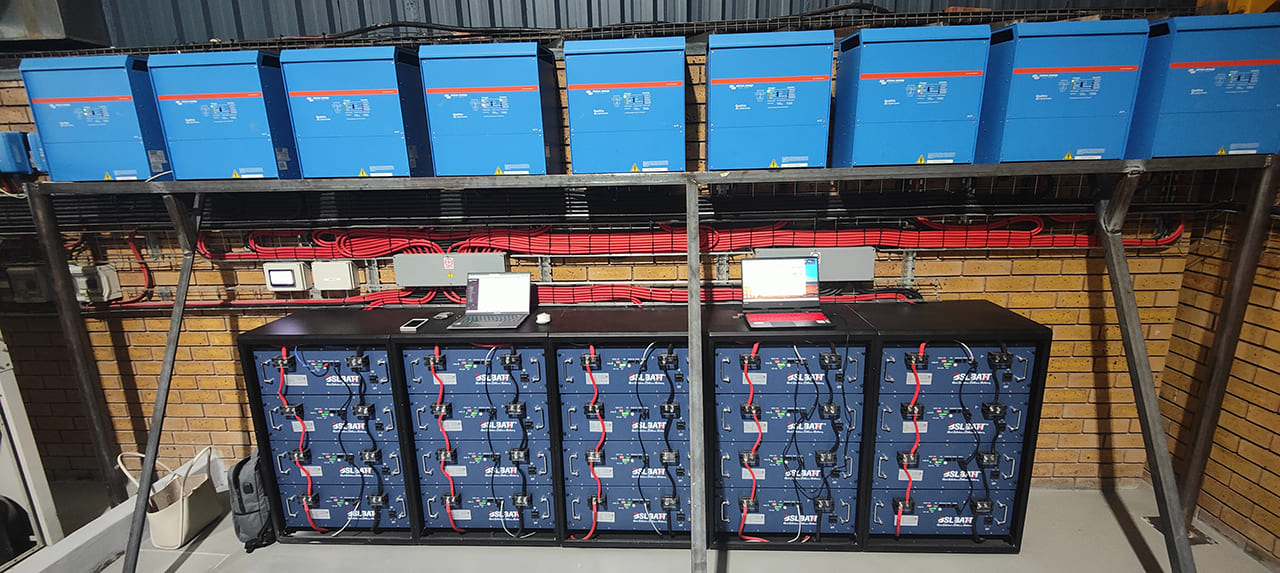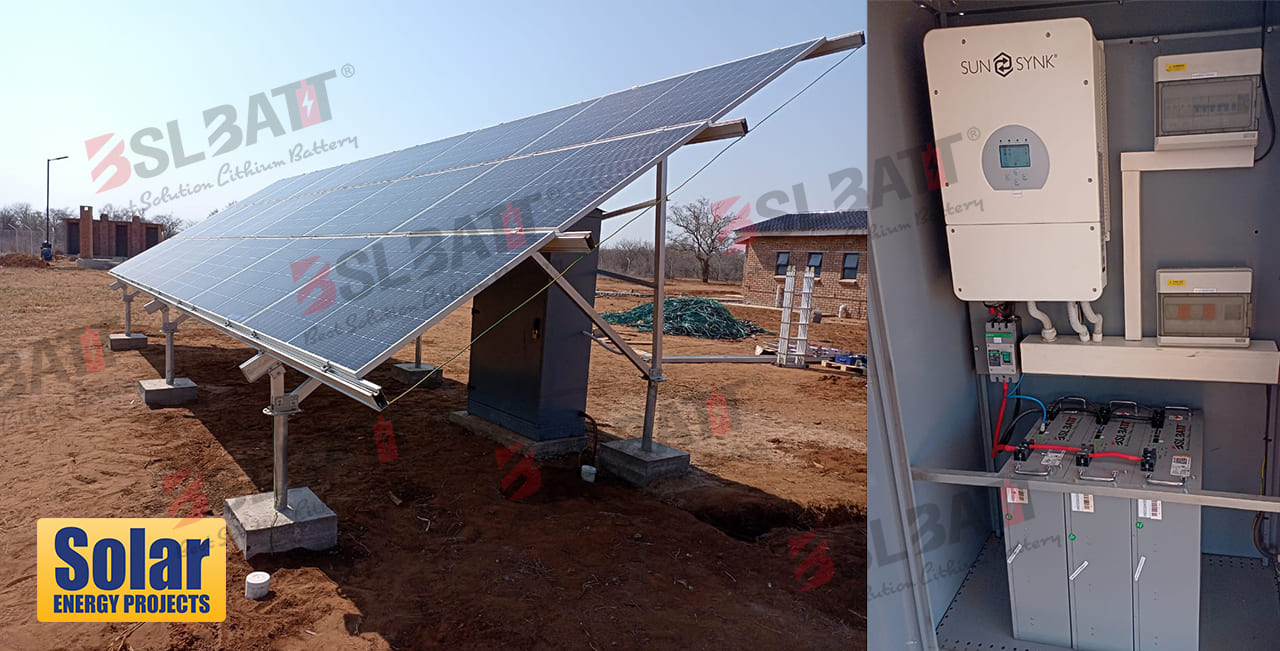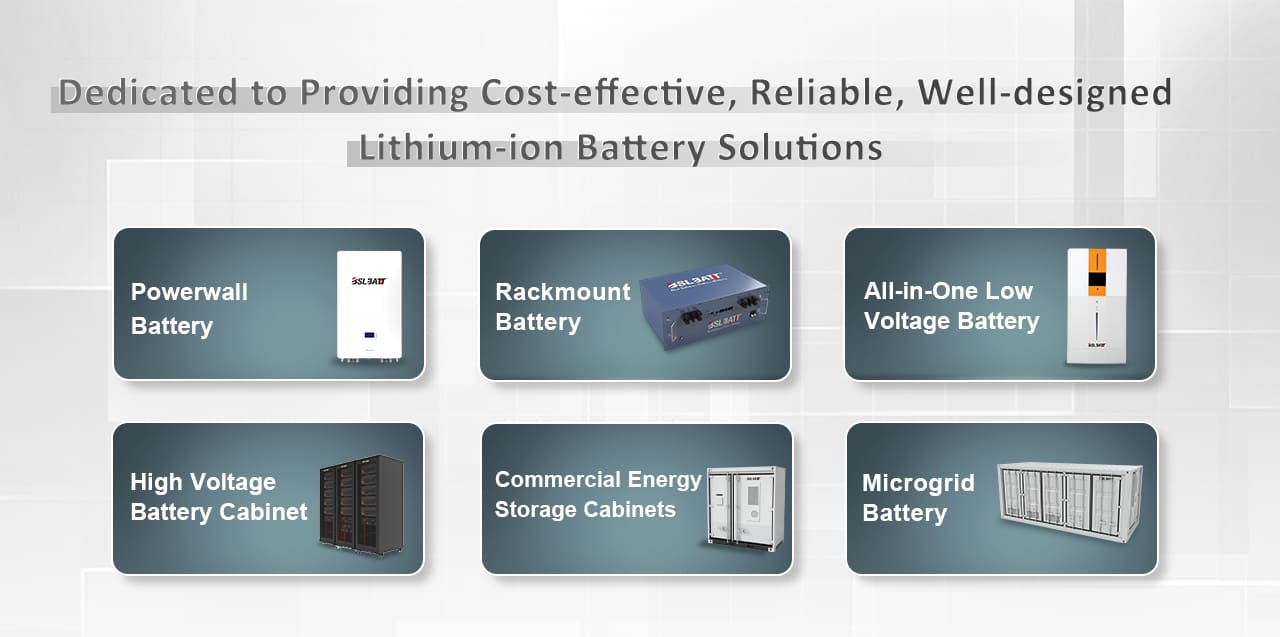Energy demand is on the rise, and so is the need for expanding power grids. However, network expansion costs can be enormous, impacting both the environment and the economy. Renewable energy sources like solar energy can help to reduce these costs. Currently, power grids rely on centralized power plants and transmission lines to deliver electricity to end users. This infrastructure is costly to build, and maintain and has several environmental impacts. This article aims to explore how solar battery energy storage can reduce network expansion costs and its impact on the environment and economy.  What is Solar System Battery Storage? Solar system battery storage is a technology that stores excess energy produced by solar panels during the day for later use. During the day, solar panels convert sunlight into electricity, which can be used immediately or stored in batteries for later use. At night or during cloudy days, the stored energy is used to power homes and businesses. There are two types of solar battery storage systems: off-grid and grid-tied. Off-grid systems are entirely independent of the power grid and rely solely on solar panels and batteries. Grid-tied systems, on the other hand, are connected to the power grid and can sell excess energy back to the grid. Using solar battery energy storage can reduce reliance on fossil fuels, lower energy costs, and decrease carbon emissions. It can also provide a reliable source of power during blackouts or emergencies. Network Expansion Costs Explanation of Network Expansion Costs Network expansion costs refer to the expenses associated with building and maintaining power transmission and distribution infrastructure to meet growing energy demand. Causes of Network Expansion Costs Network expansion costs can be caused by population growth, economic development, and the need for increased energy production to meet demand.
What is Solar System Battery Storage? Solar system battery storage is a technology that stores excess energy produced by solar panels during the day for later use. During the day, solar panels convert sunlight into electricity, which can be used immediately or stored in batteries for later use. At night or during cloudy days, the stored energy is used to power homes and businesses. There are two types of solar battery storage systems: off-grid and grid-tied. Off-grid systems are entirely independent of the power grid and rely solely on solar panels and batteries. Grid-tied systems, on the other hand, are connected to the power grid and can sell excess energy back to the grid. Using solar battery energy storage can reduce reliance on fossil fuels, lower energy costs, and decrease carbon emissions. It can also provide a reliable source of power during blackouts or emergencies. Network Expansion Costs Explanation of Network Expansion Costs Network expansion costs refer to the expenses associated with building and maintaining power transmission and distribution infrastructure to meet growing energy demand. Causes of Network Expansion Costs Network expansion costs can be caused by population growth, economic development, and the need for increased energy production to meet demand.  Effects of Network Expansion Costs on the environment and economy The construction of new power plants, transmission, and distribution lines can have significant environmental impacts, including habitat loss, deforestation, and increased greenhouse gas emissions. These costs can also increase energy prices and affect economic growth. Current methods used to reduce Network Expansion Costs To reduce network expansion costs, utilities are investing in smart grid technology, energy efficiency programs, and renewable energy sources like solar energy. The Role of Solar System Battery Storage in Reducing Network Expansion Costs How Solar System Battery Storage can reduce Network Expansion Costs? The use of solar system battery storage can reduce network expansion costs in several ways. First, it can help to smooth out fluctuations in solar power output, which can help to reduce the need for new power plants and transmission lines to meet peak energy demand. This is because solar power production can fluctuate depending on factors such as cloud cover and the time of day, whereas battery storage can provide a steady supply of power. By reducing the need for new power plants and transmission lines, utilities can save money on infrastructure costs. Second, solar system battery storage can help to increase the use of distributed energy resources, such as rooftop solar panels. These resources are located closer to where energy is needed, which can reduce the need for new transmission lines and other infrastructure. This can also help to reduce network expansion costs. Finally, solar system battery storage can provide backup power during periods of high demand or when the power grid experiences outages. This can help to improve the reliability of the power grid and reduce the need for costly infrastructure upgrades.
Effects of Network Expansion Costs on the environment and economy The construction of new power plants, transmission, and distribution lines can have significant environmental impacts, including habitat loss, deforestation, and increased greenhouse gas emissions. These costs can also increase energy prices and affect economic growth. Current methods used to reduce Network Expansion Costs To reduce network expansion costs, utilities are investing in smart grid technology, energy efficiency programs, and renewable energy sources like solar energy. The Role of Solar System Battery Storage in Reducing Network Expansion Costs How Solar System Battery Storage can reduce Network Expansion Costs? The use of solar system battery storage can reduce network expansion costs in several ways. First, it can help to smooth out fluctuations in solar power output, which can help to reduce the need for new power plants and transmission lines to meet peak energy demand. This is because solar power production can fluctuate depending on factors such as cloud cover and the time of day, whereas battery storage can provide a steady supply of power. By reducing the need for new power plants and transmission lines, utilities can save money on infrastructure costs. Second, solar system battery storage can help to increase the use of distributed energy resources, such as rooftop solar panels. These resources are located closer to where energy is needed, which can reduce the need for new transmission lines and other infrastructure. This can also help to reduce network expansion costs. Finally, solar system battery storage can provide backup power during periods of high demand or when the power grid experiences outages. This can help to improve the reliability of the power grid and reduce the need for costly infrastructure upgrades.  Case studies There are several examples of solar system battery storage being used to reduce network expansion costs. For instance, in South Australia, the Hornsdale Power Reserve, which is the world’s largest lithium-ion battery, was installed in 2017 to help stabilize the power grid and reduce the risk of blackouts. The battery system is capable of supplying up to 129 megawatt-hours of electricity to the grid, which is enough to power about 30,000 homes for an hour. Since its installation, the battery system has helped to reduce network expansion costs by providing backup power and reducing the need for new transmission lines. In California, the Imperial Irrigation District has installed several battery storage systems to help reduce the need for new transmission lines and other infrastructure. These battery systems are used to store excess solar energy during the day and provide backup power during periods of high demand. By using battery storage to help balance the grid, the utility has been able to reduce the need for new transmission lines and other infrastructure upgrades. Benefits of using Solar System Battery Storage There are several benefits to using solar system battery storage to reduce network expansion costs. First, it can help to reduce the need for costly infrastructure upgrades, which can save utilities and ratepayers money. Second, it can help to improve the reliability of the power grid by providing backup power during periods of high demand or when the grid experiences outages. Third, it can help to reduce carbon emissions by allowing utilities to rely more on renewable energy sources. The use of solar system with battery storage can play an important role in reducing network expansion costs. By providing backup power, smoothing out fluctuations in solar power output, and increasing the use of distributed energy resources, solar system battery storage can help utilities to save money on infrastructure costs and improve the reliability of the power grid.
Case studies There are several examples of solar system battery storage being used to reduce network expansion costs. For instance, in South Australia, the Hornsdale Power Reserve, which is the world’s largest lithium-ion battery, was installed in 2017 to help stabilize the power grid and reduce the risk of blackouts. The battery system is capable of supplying up to 129 megawatt-hours of electricity to the grid, which is enough to power about 30,000 homes for an hour. Since its installation, the battery system has helped to reduce network expansion costs by providing backup power and reducing the need for new transmission lines. In California, the Imperial Irrigation District has installed several battery storage systems to help reduce the need for new transmission lines and other infrastructure. These battery systems are used to store excess solar energy during the day and provide backup power during periods of high demand. By using battery storage to help balance the grid, the utility has been able to reduce the need for new transmission lines and other infrastructure upgrades. Benefits of using Solar System Battery Storage There are several benefits to using solar system battery storage to reduce network expansion costs. First, it can help to reduce the need for costly infrastructure upgrades, which can save utilities and ratepayers money. Second, it can help to improve the reliability of the power grid by providing backup power during periods of high demand or when the grid experiences outages. Third, it can help to reduce carbon emissions by allowing utilities to rely more on renewable energy sources. The use of solar system with battery storage can play an important role in reducing network expansion costs. By providing backup power, smoothing out fluctuations in solar power output, and increasing the use of distributed energy resources, solar system battery storage can help utilities to save money on infrastructure costs and improve the reliability of the power grid.  Solar System Battery Storage Leads the Energy Revolution Solar battery energy storage can reduce network expansion costs by reducing the need for new power plants and transmission lines. It can also provide cost savings to utilities, reduce carbon emissions, and improve the reliability of the power grid. As battery technology continues to improve, the use of solar battery energy storage is expected to increase significantly in the future. The use of solar with battery storage has significant implications for the environment and the economy. It can help to reduce carbon emissions, lower energy costs, and create new jobs in the renewable energy sector. Further research is needed to explore the potential of solar battery energy storage to reduce network expansion costs and its impact on the environment and economy. Studies on the scalability and cost-effectiveness of solar battery energy storage systems can help to inform policy decisions and drive the adoption of renewable energy technologies. In conclusion, solar battery energy storage is an innovative technology that can help to reduce network expansion costs, lower carbon emissions, and improve the reliability of the power grid. As battery technology continues to advance and the cost of solar energy decreases, the use of solar battery energy storage is expected to increase significantly in the future.
Solar System Battery Storage Leads the Energy Revolution Solar battery energy storage can reduce network expansion costs by reducing the need for new power plants and transmission lines. It can also provide cost savings to utilities, reduce carbon emissions, and improve the reliability of the power grid. As battery technology continues to improve, the use of solar battery energy storage is expected to increase significantly in the future. The use of solar with battery storage has significant implications for the environment and the economy. It can help to reduce carbon emissions, lower energy costs, and create new jobs in the renewable energy sector. Further research is needed to explore the potential of solar battery energy storage to reduce network expansion costs and its impact on the environment and economy. Studies on the scalability and cost-effectiveness of solar battery energy storage systems can help to inform policy decisions and drive the adoption of renewable energy technologies. In conclusion, solar battery energy storage is an innovative technology that can help to reduce network expansion costs, lower carbon emissions, and improve the reliability of the power grid. As battery technology continues to advance and the cost of solar energy decreases, the use of solar battery energy storage is expected to increase significantly in the future.
Post time: May-08-2024








